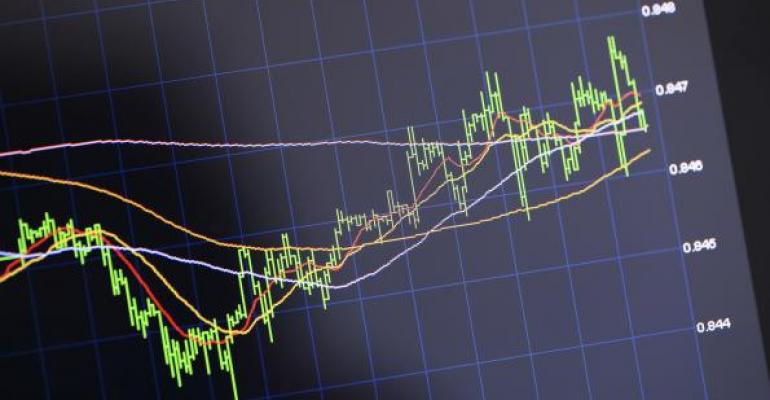We often discuss investors’ risk appetite in these Market’s Measure columns. And, rather than relying upon arcane or proprietary metrics, we attempt to use indicators that anyone can monitor for free in real time. More often than not, those measures are based on the prices of exchange-traded funds (ETFs). One of them is the XLY/XLP ratio which is illustrated in the chart below.

The components of the ratio are:
- The Consumer Discretionary Select Sector SPDR (NYSE Arca: XLY) represents elastic demand for durable goods like furniture and automobiles as well as leisure and luxury goods and services. These are discretionary items because the demand for them is determined, in great part, by their prices. Consumers buy these items when they feel flush.
- The Consumer Staples Select Sector SPDR (NYSE Arca: XLP) is a proxy for those goods people can’t do without such as toothpaste and bathroom tissue. Demand for these goods—and for the retailers who sell them—is relatively inelastic.
You get the ratio when you divide the price of XLY by XLP’s market value. The higher the ratio, the more enthusiastic consumers are about the nation’s—and their own—economic prospects. When the ratio falls, the risk of an economic slowdown increases as demand for discretionary goods weakens.
The ratio’s been a fairly good bellwether for equity market sell-offs that accompany or precede economic slowdowns.
The ratio’s been bumping up against the 1.66 level this summer—a level that heralded a 10 percent equity market drop in 2015 as well as a 46 percent plunge way back in 2007.
The question ratio watchers are asking themselves now is this: Is the ratio stalling and setting up a fall? Or is an upside breakout due? In other words, is consumer confidence set to enter bullish territory not visited since 2005 or is enthusiasm for this economy topping out?
If we’re at a top, a sell-off could be steep—all the way down to the 1.38 level touched in early 2016. If we’re just at a consolidation stage before an advance, the upside seems historically limited. The all-time high for the ratio is the 1.71 level attained in 2004
Careful monitoring of the ratio over the coming weeks will confirm the likely direction of the equity market—and the economy.
Brad Zigler is WealthManagement's Alternative Investments Editor. Previously, he was the head of Marketing, Research and Education for the Pacific Exchange's (now NYSE Arca) option market and the iShares complex of exchange traded funds.

